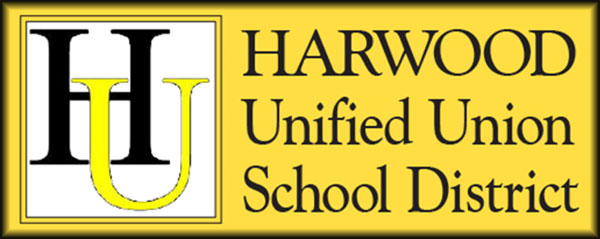The Harwood Unified Union School District (HUUSD) Board heard a presentation on the district’s work toward proficiency-based learning (PBL) about its stages of implementation and where it is now.
Sam Krotinger, Harwood assistant principal; Sally McCarthy, director of school counseling; and Lisa Therrien presented the PBL slide show to school board members at an April 24 meeting.
Krotinger opened the presentation by giving the board a background on his school education, including challenges he faced while switching from different schools and learning structures while growing up. Krotinger added that PBL differs from the district’s prior learning method by prompting students to do more critical thinking and questioning and practice self-advocacy.
Krotinger reviewed the district’s work since PBL was started in 2014-15 when the leadership team had team training. The timeline went from regular after-school meetings to meetings during school hours with students there to share input. In years to follow the team implemented extended learning opportunities (ELO) blocks for students where they could work and receive additional help on assignments from instructors.
In 2017-18 the leadership team had strategic parent communication events and facilitated discussions with verification of graduation guidelines addition of course scores. The team also made a transition from one software to another called JumpRope. JumpRope is a software company that works on the implementation of standard-based grading to help teachers and administrators ensure implementation of a standard-based model.
The school offered a freshman focus support development summer session in 2018. Krotinger said there was an improvement to student learning as a schoolwide common syllabus was presented and Google classroom was used to ensure clear and effective communication of course expectation to students and parents.
Torrey Smith, board vice chair, Duxbury, asked how close teams were to where they want to be. Krotinger said they feel good, but they can always do better.
"The schools we've seen in New England that are really being challenged with their PBL implementation and deployment are the schools where anyone can sign a contract with JumpRope and change the way you report, but it's the practice that has to shift to ensure that change is meaningful and improves student learning. So I feel like we are at that and it’s a huge component of our professional development focus," said Krotinger.
McCarthy reviewed online transcripts and school profiles that are accessible through the school website. McCarthy walked through the website showcasing student transcripts and course scores. The site had a more traditional transcript approach and a proficiency summary. The PBL profile has detailed information on community and performance data, PBL, graduation requirements and other Harwood community highlights.
After additional questions from the board on student preparedness and whether this style of grading would impact students pursuing secondary school education, which has a one to 100 scoring system, McCarthy added, "Even in a traditional grading system in the last 10 years we've been hearing colleges say students, and not Harwood students, are not prepared when they get to college, so time will tell," said McCarthy.
BOARD QUESTIONS
Board member Theresa Membrino, Fayston, asked the team if their methodology was in line statewide and nationwide and if the school was cutting edge.
Krotinger said it was different all over. The philosophy is understood, but all the schools are at different points of implementation. McCarthy said across the nation it varies from state to state, in private schools they call it PBL mastery, and it is being adopted as well.
The changeover for school systems toward PBL came with a statewide deadline to have proficiency-based graduation requirements in place for all of Vermont’s 2020 high school graduates. Under a set of new standards adopted by the Vermont State Board of Education in 2014, the Class of 2020 will be eligible for graduation when they’ve demonstrated “evidence of proficiency” in the curriculum. The state requirements are an effort to make education in Vermont more student-centered; that includes customization, flexibility and a project-based work method.
James Grace, Waterbury, asked if there’s been any quantitative analysis that has been done on other things that the team has measured in the district besides PBL.
Krotinger said that’s hard to answer as the district has only had the assessment tools for over a year and a half and it’s hard to set a baseline with trends and data with everything being fresh. The Class of 2020 hasn't completed taking its SATs and ACTs yet.
Teachers have been grading students using both the old zero to 100, with the A to F grading way, and the PLB way.
The board adopted and approved the list of challenges/opportunities they are trying to address through the preK-12 plan as a working document subject to change. The board also adopted and approved the timeline for the preK-12 plan, the nine configurations model as a working document. This document and timeline is to get to a bond vote before Town Meeting Day 2020.






